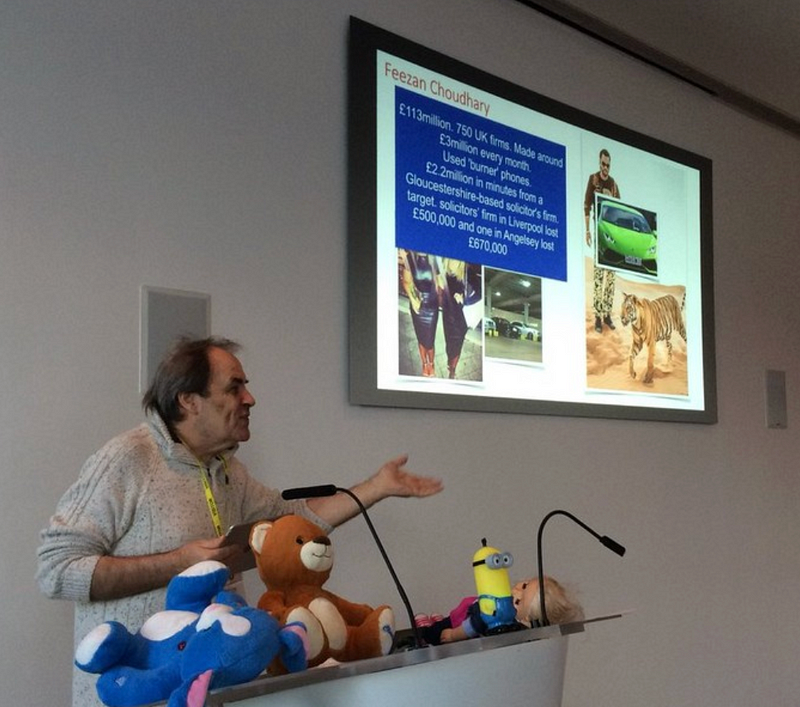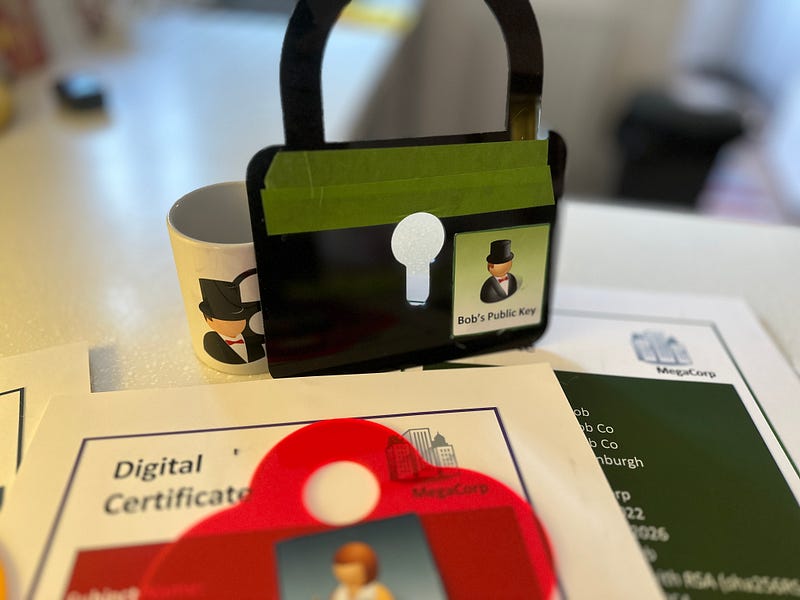Crypto Props In Talks

Crypto Props In Talks
Sorry for the tongue twister!
As an academic, I’ve learnt two core things … be fair and consistent in your approach to everything you do in your work, and know what your main responsibilities are. My role is a Professor. And so, as a Professor, I have a core responsibility of leading research, but my main responsibility as an academic is to teaching. It is what I love, and it is a privilege that will never leave me.
I could publish a world-leading research paper and which provides a most amazing breakthrough, but nothing would ever beat the opportunity to teach our students. And, I love teaching as much as I did when I first started — in fact, I love it more now than then because now I really know my topic. To teach well, too, you have to love your subject, and I am very lucky that network security and cryptography are topics that mean a lot to me, and I know how relevant they are to our students.
In the past, I have used props that I hacked:



and used Rammstien quite a few times:


and for hackable smart LEDs and disco lights:

and live drones:

and used human props, too (such as the wonderful Eamonn Keane):

and even wore a mask to make a point:


My new props
And, so, I think using props in lectures can really bring a topic alive, and teaching symmetric key encryption, public key (asymmetric) encryption and digital certificates can be a little abstract, I’ve made some props for live demos:

To me, to use physical things to illustrate complex topics, and make it a fun and interactive learning process, can bring a topic alive. I will also be using these for forthcoming key note talks on quantum computers (as I need to explain encryption before I explain how quantum computers crack public key encryption (and not so much hashing and symmetric key encryption).
And, for symmetric key encryption, we just need the same key on either side:

For Alice’s public key, I have made a padlock to show that a public key is like a padlock that you can distribute to anyone, and Alice’s private key is the only one to open this padlock:

And for Bob, he has his padlock too:

And the private keys of the key pair:

And, one of the most challenging areas to understand in cybersecurity, is the usage of digital certificates, so I managed to get some posterboard, and created some large digital certificates to show a distributed certificate (with only the public key) and a certificate with the key pair:

This will also help me explain how Trent (Mega Corp) signs the digital certificate, and also the importance of the main parameters on the certification (such as the expiry date, the key type, and the fingerprint).
Conclusions
Every year is different, and it’s a new set of students, and that is what makes teaching so interesting. If you have time, please come along to one of our quantum computer talks, and I’ll hopefully bring the props along and tell the amazing story of cryptography and how it saved the Internet — thanks to Bob Alice and Trent, of course.
An innovation in teaching isn’t just about innovating with technology, it can be as much about innovating in creating engagement, too. Education should be fun, interesting and (at times) inspiring — and you should leave every talk having learnt something.
Go be a teacher to others …